The Cincy Art Museum
Dear George,
One perk of being retired is
that I get to go more often to local art shows. In particular, I go to all the new exhibitions at the Art
Museum. With over 60,000 works,
this is one of the most comprehensive museums in the Midwest. It’s best known for its collections of
European old masters (e.g., Botticelli, Rubens, Hals), ancient Middle Eastern
art, and its 15-gallery Cincinnati art history wing (e.g., Frank Duveneck,
Robert Scott Duncanson, Elizabeth Nourse, Henry Farny). Though not many people know
it, we also have an excellent collection of artworks featuring dogs. These are currently scattered throughout the museum. If all of these dog works were assembled in
a single wing, it would undoubtedly draw visitors from far and wide. I’ve taken photos of a number of the
museum’s dog paintings and sculptures. They are arranged chronologically below,
and I’ve added some poetic commentary. Here’s how our dog collection is looking
these days.
Mithras Slaying the Sacred Bull, c. 150-200, Roman,
limestone.
Mithras gets credit for slaying the bull
Though his dog did much of the work
You or I could poke a bull with a knife
But biting the bull is berserk
Relief depicting a boar hunt. Northwestern Iran, Daghestan. 13th or 14th
century.
When you set out to slay the wild boar
Bring two or three dogs to the hunt
A boar can gore you from stem to stern
That's why the dogs are in front
That's why the dogs are in front
Millefleurs Tapestry. Flemish, 1520-25
There were many strange beasts in the Middle Ages
Unicorns and minotaurs and deer
Dogs were the best behaved of the lot
They kept all the serfs in good cheer
Jan Verkolje.
Lute Player with Boy and Dog.
(ca. 1670s)
The lute makes the prettiest sound there is
It leads the all the young folks to dance
This boy is impressed by his hip-hopping dog
Who knew how well he could prance?
Benjamin West. Anne Allen, later Mrs. John Penn. (1763)
Anne
Allen is looking pretty but sad
Her
thoughts are many miles away
It
turns out Anne is in love with a cad
Let’s
pray her dog keeps him at bay
Sir Joshua Reynolds. Richard Pelers Symons, M.P. (1770-71)
M.P. Symons is surely a handsome fellow
Affluent, poised, and genteel
His greyhound is chiseled and masculine
He helps the M.P. look more real
Martin Quadal. Self-portrait.
(1788)
Martin Quadal wears his finest green robe
His dog’s quite attuned to his master
Some think that the canine’s admiring Quadal
Not true, he just wants dinner faster
English School. Young Boy With a Dog.
(ca. 1800)
Here is a boy who is baffled by life
He’s lucky he’s got a wise dog
The dog protects his young master from strife
And they’re both thrilled to be on a blog
Cardinal Alessandro Lante Della
Rovere’s Dog, Italian School. (ca.
1816-1818)
The Cardinal’s dog isn’t much of a hunter
Nor a guard dog nor a herder of sheep
He spends his time on his bright red pillow
His singular talent is sleep.
Alvan Fisher.
Little Bo-Peep. (1835)
Bo Peep is a famous shepherdess
But I think she’s forgotten her job
Her dog better hurry and round up her sheep
Or soon they’ll be lamb shish kebab
Powell, William Henry. Portrait of a Boy and Dog. (1836)
This dog has become very worried
His master lost both of his shoes
The dog knows the boy is in danger
No shoes and his feet he will bruise
Daniel Saint.
Lady With a Greyhound. (ca.
1839-42)
Here is a damsel with a most manly pet
He adds grace and style to her fame
We no longer know who the lady is
But Boris is the greyhound’s name
Theodore Robinson. A Canine Patient.
(ca. 1883)
This
little pup is most content
He
rests on his sweet human’s lap
She
says that she is ready to play
But
he’s busy taking his nap
Lilly Martin Spenser. The Dogged Class.
1885.
Betty Sue has gathered all of her dogs
She’s hosting a New Year’s Eve party
The dogs aren’t into parties that much
They’re content to sit back and look arty
Joseph Henry Sharp. Fountain Square Pantomime. (1892).
(Segment of larger painting)
Here are some kiddies on Fountain Square
The crowd is awaiting the parade
The little bull terrier has the best seat of all
He’s impressed by the copper’s tirade
Charles T. Webber. Fugitives Arriving at Levi Coffin’s Indiana Farm, A Busy
Station of the Underground Railroad.
(1893)
It’s a cold winter night on the Coffin farm
The dog is greeting freed slaves
He’s there to keep the visitors from harm
And help them escape from the knaves
George Bellows. Hungry Dogs.
(1916)
These are many wild dogs in the city
They scavenge the alleys for bread
It’s important for dogs to be gritty
Their option is winding up dead
Edward H. Potthast. Playmates. (ca.
1918)
Now we’ve arrived at the Jersey shore
The beach, the kids, and the sea
The children are looking for sharks in the waves
While the dog’s getting ready to pee
John Stuart Curry. The Old Folks
(Mother and Father). (1929)
It’s Sunday morning down on the farm
The dog has her eye on the cows
Ma is knitting her blue cotton scarf
But Pa would prefer to carouse
There are many other dog pics at
the museum that I haven’t had space to include here. All in all, these images lead me to several
conclusions. (1) Aside from human
beings, there are more artistic depictions of dogs than of any other living
creature. The latter would include
cats, squirrels, tigers, horses, cows, elephants, turtles, birds, whales,
butterflies, and giraffes. (2)
Human beings look much more interesting when they have a dog at their side. (3)
Dog pictures elicit more pleasant feelings than do still lifes, landscapes, or
abstract expressionism. It’s no
wonder artists are drawn to dogs.
Love,
Dave



































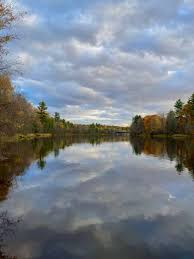










































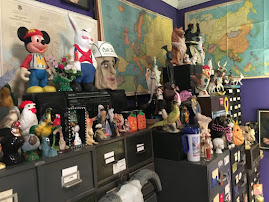









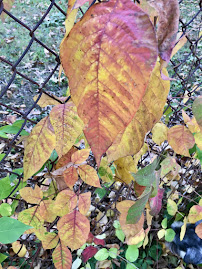




















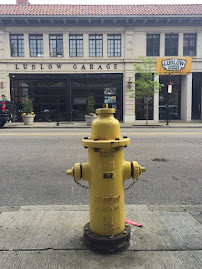







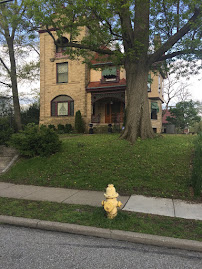


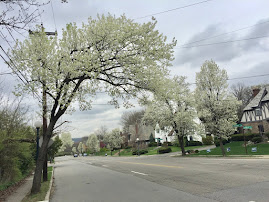















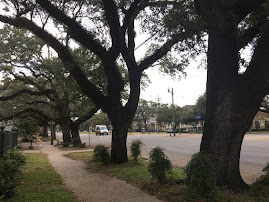





























No comments:
Post a Comment